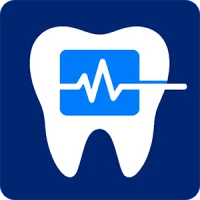
Dental Blog
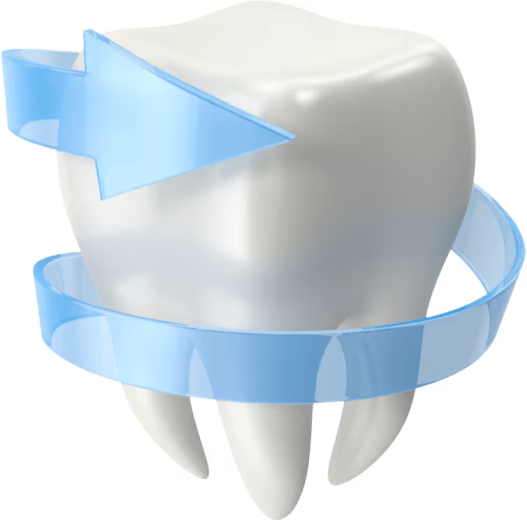

Resources for Dentists
Dive deep into helpful guides and in-depth information about:

Your Resource for Dentistry Insights
Sedation dentistry is evolving. Regulations change, compliance requirements grow, and practices need tools to stay ahead. The Sedate Dentistry Blog is here to help you learn, adapt, and succeed with resources built for dentists, oral surgeons, and office managers.

Explore Topics That Matter

Sedation Dentistry
Learn about sedation dentistry's best practices, compliance tips, and case studies.

Patient Vitals Monitoring
Device integrations, patient monitoring, and technology insights.

Patient Forms & Experience
Intake forms, digital consent, and patient-focused workflows and user experience.

Dental Practice Growth
Grow your dental practice with in depth guides, tutorials, and software reviews.
Recent Guides for Dentists

IV Sedation Monitoring Compliance and Safety Standards
IV sedation is safest when monitoring is relentless, documentation is live, and standards live inside the chart. This guide lays out the exact compliance requirements for monitoring, the intervals that keep you ahead of events, and the documentation patterns that let your record defend itself—paired with tools that make the right behavior the easy behavior.
Table of Contents
IV Sedation Monitoring: Compliance and Safety Standards
The point of monitoring is early warning
The compliance standard is a documented, time-stamped story
What to monitor in IV sedation—no shortcuts
How to set the interval cadence without guesswork
Capnography is the earliest airway warning you have
Device setup quality determines whether your data can be trusted
Documentation must mirror what you say out loud
The event timeline pattern makes reviews instantaneous
Objective discharge criteria end “looks ready”
What IV monitoring looks like in an actual timeline
The nitrous block still matters in IV cases
A one-page pre-op checklist that reduces cancellations
Assign roles so monitoring never slips
Use a dashboard to coach to five metrics, not opinions
Policies must live where people click
How to turn the standard into habit in four weeks
Patient counseling is part of compliance
The cost question belongs to rework avoided, not clicks added
Monitoring is the backbone of IV sedation. Your plan is only as safe as your airway vigilance, your interval cadence, and the quality of your documentation. This article translates compliance into room-ready steps you can implement today using IV sedation charting software, Sedation visit record software, Patient Vitals Monitor Integrations, and Dental sedation compliance.
The point of monitoring is early warning
Monitoring aims to catch hypoventilation and hemodynamic shifts before they become events. Continuous SpO₂ and heart rate, interval blood pressure, and capnography give the earliest signal that airway tone changed or that a dose blunted ventilation more than intended. When those data stream into your chart automatically, your Recorder can focus on doses and events in real time instead of transcribing numbers later.
The compliance standard is a documented, time-stamped story
Compliance isn’t just “collect vitals.” Compliance is a complete, time-stamped narrative that shows baseline ×2, induction, interval checkpoints, “extra entries” during stimulation spikes, medication entries with concentration/route/indication/response/totals, and objective discharge. When your monitoring and charting are synchronized, reviewers can confirm safety in seconds.
What to monitor in IV sedation—no shortcuts
Safe IV sedation depends on a few core signals every case.
● SpO₂ and HR continuously for oxygenation and rate/rhythm changes
● Non-invasive blood pressure at defined intervals (and extra readings when stimulation spikes)
● Capnography (ETCO₂) for early detection of hypoventilation and obstruction
● Respiratory rate derived from capnography where available
● ECG when patient risk factors, medications, or procedure complexity warrant
How to set the interval cadence without guesswork
Interval cadence must be predictable in calm moments and flexible in busy ones. A timer that cues the Monitor Tech and a rule that triggers “extra entries” when the room gets noisy are what keep charts clean.
Capnography is the earliest airway warning you have
Capnography is your first indicator of hypoventilation or obstruction because it reacts before SpO₂ drops. ETCO₂ rising with a falling respiratory rate is the cue for a jaw thrust or stimulation; an absent waveform is a sensor issue until proven otherwise. Streaming capnography into the timeline through Patient Vitals Monitor Integrations lets you correlate interventions with recovery in one glance.
Device setup quality determines whether your data can be trusted
Clean signals beat fancy settings. A 30-second quality check prevents ten minutes of chart confusion later.
● Plethysmography: confirm a crisp pleth waveform before induction so pulse oximetry tracks reality
● Blood pressure: size the cuff correctly and verify an initial reading that matches the clinical picture
● Capnography: check sampling line patency and secure placement; confirm a square waveform at baseline
● ECG (if used): ensure electrodes adhere and minimize movement artifact
Documentation must mirror what you say out loud
Your Recorder should speak and type the same short sentence for every medication entry so the timeline matches the room’s reality. “Medication name and concentration (mg/mL), route, exact dose, time, indication, response, running total.” Because minute‑by‑minute IV charting mirrors those fields, entries take seconds and never need backfilling.
The event timeline pattern makes reviews instantaneous
Events and reversals read clearly when you use one format: observation → action → dose → response, each with a time.
● “10:26 ETCO₂ 55 with RR 10 during luxation; jaw thrust + O₂ 10 L/min; fentanyl 25 mcg IV; RR 14, ETCO₂ 42, SpO₂ 99% by 10:28; purposeful.”
That single line lets auditors confirm cause and effect without searching for vital sign numbers.
Objective discharge criteria end “looks ready”
Discharge is a checklist, not an impression. Your chart should enforce completion before sign-off with compliance checklists for sedation.
● Recovery vitals stable
● Orientation appropriate for age
● Ambulation with minimal assistance if applicable
● Nausea and pain controlled; oral fluids tolerated when indicated
● Escort present and briefed for oral/IV cases
● All required fields complete in the record
What IV monitoring looks like in an actual timeline
Seeing a real pattern makes it easier to coach.
● 09:02 Baseline vitals ×2 recorded; pleth crisp; cuff sized correctly.
● 09:07 Midazolam 1 mg/mL, IV push, 1.0 mg for anxiolysis; calmer; SpO₂ 98%; total 1.0 mg.
● 09:12 NIBP 122/76; ETCO₂ waveform square at 40–44 mmHg; RR 14.
● 09:19 Injection begins; “extra entry” triggered; ETCO₂ 45; RR 12; traction planned.
● 09:20 Jaw thrust with brief O₂ 10 L/min; ETCO₂ 52→40 by 09:21; SpO₂ 99%.
● 09:25 NIBP 124/80; all signals stable; procedure continues.
● 09:48 Recovery begins; vitals remain stable; criteria met by 10:02; discharge per clinician.
The nitrous block still matters in IV cases
Some IV cases include nitrous for anxiolysis. Gas is dose over time, so document it like a medication in a single block inside digital sedation visit records: start time, titration range, peak percentage and duration at peak, and an O₂ flush at the end. That compact entry turns a chronic audit ding into a strength.
A one-page pre-op checklist that reduces cancellations
Pre-op clarity prevents day-of chaos. Use this HTML table to standardize calls and confirmations.
Assign roles so monitoring never slips
Monitoring fails when “everyone” owns it. Clear roles keep intervals on time and the record complete.
● Sedation Lead titrates and makes decisions
● Monitor Tech owns the timer, calls vitals, validates signal quality
● Recorder types live, reads back doses, logs “extra entries” on spikes
● Room Support stages oxygen/suction and helps with sensor fixes
Use a dashboard to coach to five metrics, not opinions
A tiny KPI board keeps teams honest and motivated. Review it at the Friday huddle.
Policies must live where people click
Policy PDFs don’t change behavior; in-chart guidance does. Store consent language, interval rules, dose documentation tips, and discharge criteria with version control and read receipts in sedation compliance software. When guidance updates, the new language appears right where staff already chart.
How to turn the standard into habit in four weeks
Short sprints beat long memos. This rollout works in solo clinics and DSOs.
● Week 1: Build the template—required concentration/route on doses, nitrous block, objective discharge—and publish the policy where the team charts using paperless sedation visit logs.
● Week 2: Stream SpO₂/HR (add NIBP/ETCO₂ next) and validate signal quality via Patient Vitals Monitor Integrations.
● Week 3: Train the eight-field dose script; lock timer cadence; rehearse “extra entries” during stimulation spikes in IV sedation documentation.
● Week 4: Go live; coach to the five KPIs; use two-minute micro-drills when a metric dips.
Patient counseling is part of compliance
Clear, consistent explanations reduce cancellations and keep expectations aligned with monitoring reality. Use a short script that explains continuous monitoring, how memory works under sedation, and why discharge depends on criteria, not the clock. For patient education companion pieces, link within this category to IV Sedation Dentistry: Risks, Benefits & Eligibility and What Is IV Sedation in Dentistry? Process, Risks & Benefits.
The cost question belongs to rework avoided, not clicks added
Monitoring done right speeds charting because you’re not retyping numbers or explaining gaps later. Streaming vitals, timer-driven intervals, and objective discharge reduce late edits and payer clarifications. If you need to model the savings, compare assumptions in Sedate Dentistry vs. paper records and finalize with Plans & Pricing.
Bottom line
Monitoring compliance is more than “watch the screen.” It’s a disciplined cadence, clean signals, and a live, time-stamped record that explains what you saw and how you responded. When timers cue behavior, devices stream vitals, and discharge is objective, your rooms feel calmer and your charts defend themselves. The safest plan becomes the easiest plan—every time.
Next Steps
Book a Free Demo to see how Sedate Dentistry’s Digital Sedation Visit Records Software can streamline and replace paper sedation visit records—saving time, money, and increasing compliance while reducing liability and improving the quality of patient records.
Ready to modernize your sedation documentation? Book a Free Demo.

Stay Ahead of the Curve
Benefits of Following Our Blog
Learn compliance best practices.
Discover new sedation software features.
Get expert tips for improving patient care.
See how practices are switching from paper or competitors like Xchart.

Learn More About Sedate Dentistry?
Request a software demo today. See how we can digitalize your sedation visit records.
Simple Pricing, No Hidden Fees
No limits on Procedures or Patients (additional fees for additional offices and dentists)
Testimonials
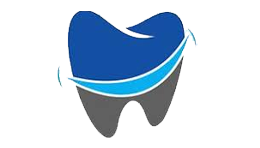
SmileRight Dentistry
Here's Sedate Dentistry Software in a nutshell. Time Saver. Money Saver. Easy to use. Amazing support. End of story.
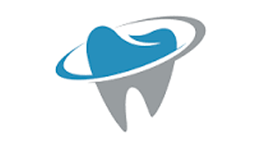
DentalClean
We learned about Sedate Dentistry from one of their other sister companies Edental. We switched from Xchart and this app works great.
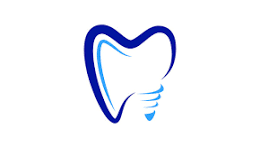
Metro Dentistry
The team at Sedate Dentistry has been amazing, especially Josh who helped integrate into our Edan X10. Much better than Xchart and a fraction of the price.
Contact Us
Contact Us
3165 West 4700 South, Suite A, Taylorsville Utah 84129



















